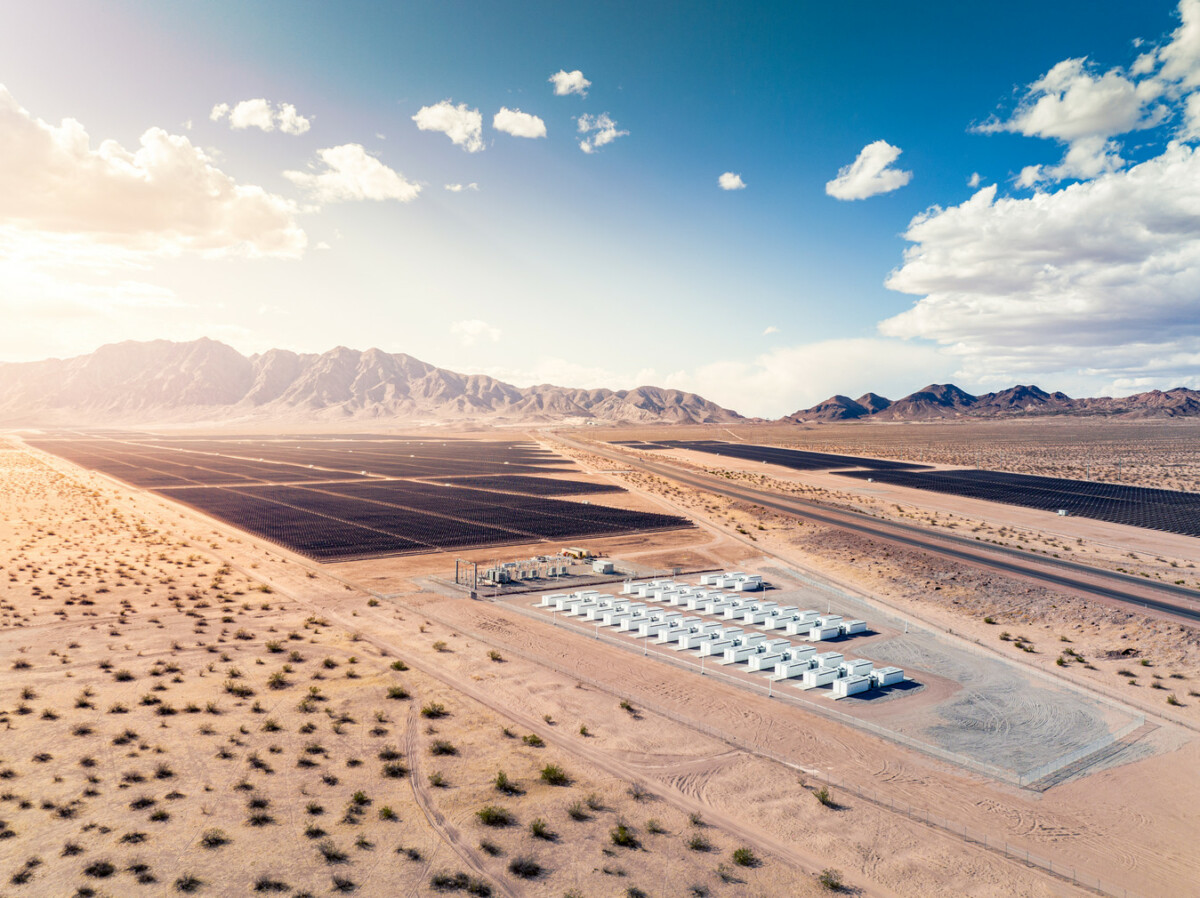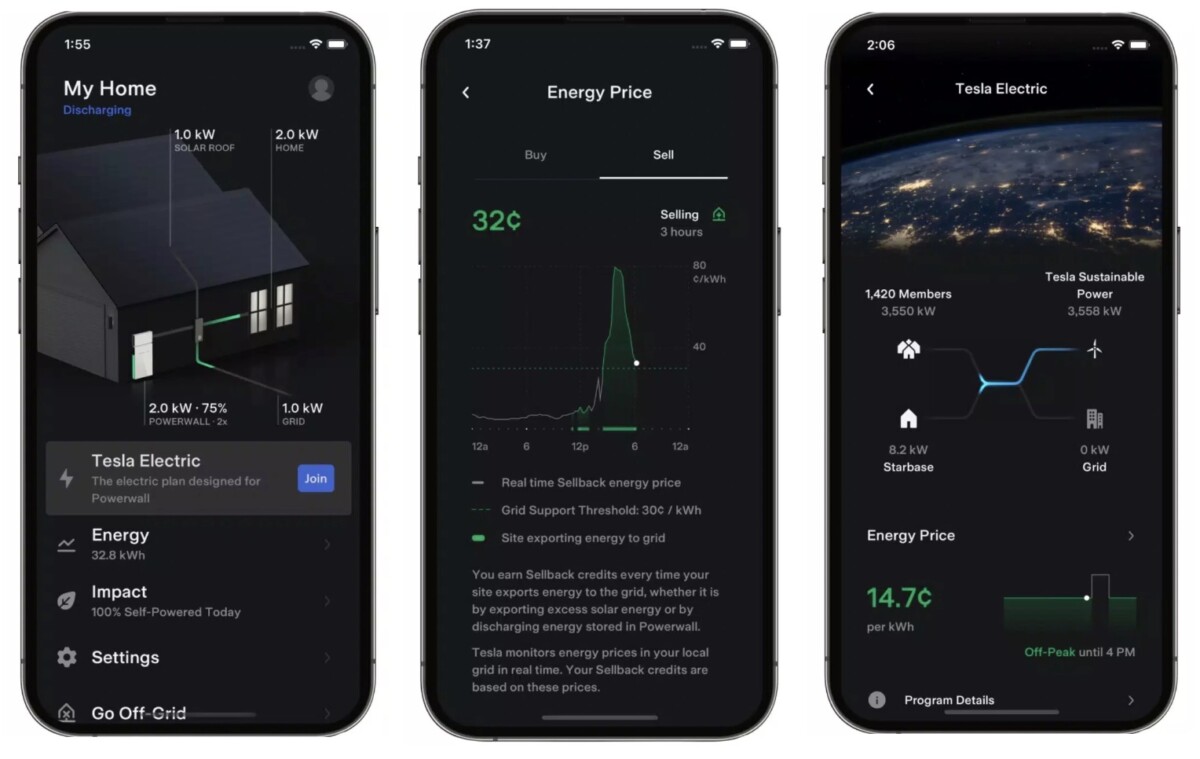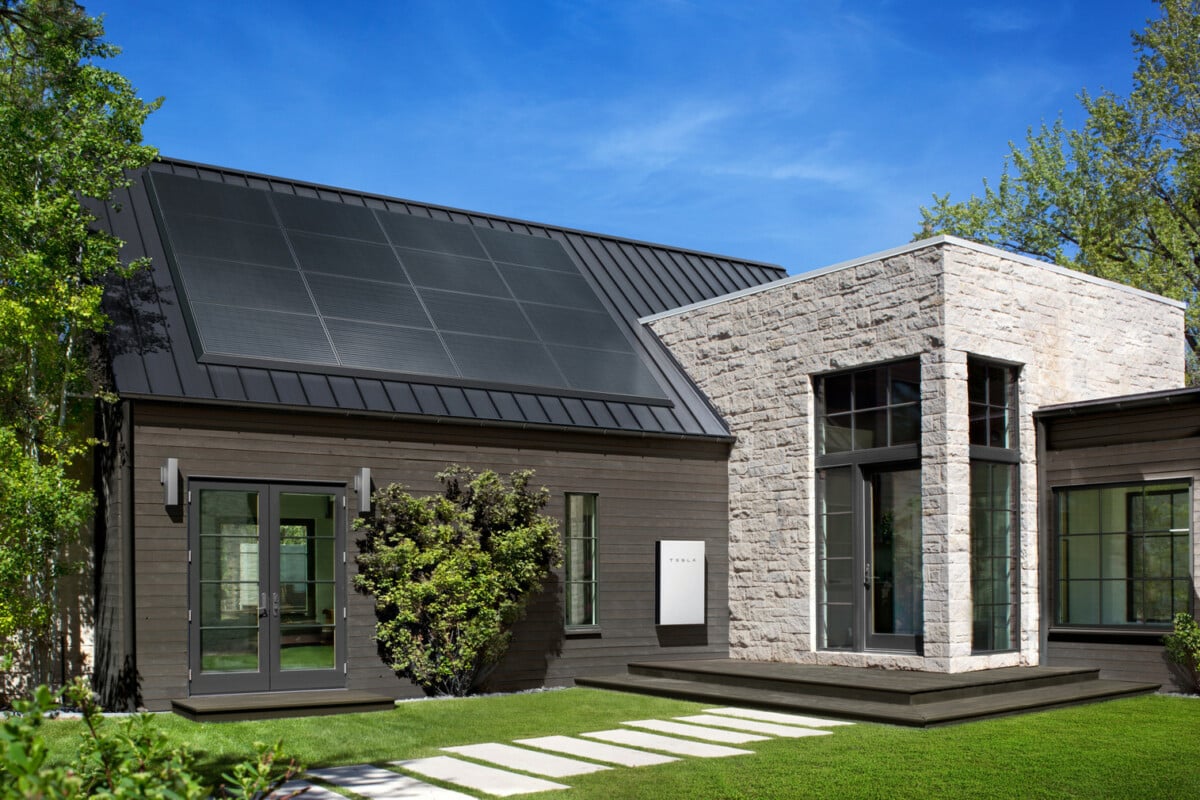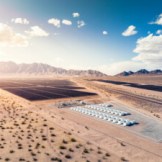Tesla officially becomes an electricity supplier. Called Tesla Electric, the offer is currently only available in Texas, United States. But there is no doubt that this offer will gradually expand throughout the world, since trials are already taking place in Japan with a virtual power plant. We will explain everything to you.
After the launch of its virtual power plants in the United States and Japan, Tesla is going even further. Elon Musk’s company has officially become an electricity supplier in Texas. Some Americans may therefore subscribe to Tesla’s offer to supply their home with energy. But beware, since this offer is only reserved for owners of a Powerwall, Tesla’s famous stationary battery that can power your home.
Recall that the Powerwall battery is mostly connected to photovoltaic panels. These power the house and can fill the battery if the household’s electricity needs are less than the amount of energy the solar panels produce. In this way, the battery can in turn power the home when the sun goes down, or even in the event of a power outage on the electrical network.
Tesla’s Virtual Power Plant
But, an additional feature has existed for a few months at Tesla: the virtual power plant, in California. The idea is to allow owners of a Powerwall toinject the electricity contained in the battery into the electrical network, if needed. This is the case during peak consumption, in summer due to air conditioning, or in winter due to heating. This then allows the unstable American network to have more energy available, and therefore to withstand these difficult periods.

In return, the owners of a battery that injects electricity into the network are rewarded, since Tesla buys back this quantity of energy, at a very advantageous price (around 2 dollars per kWh, i.e. more than 10 times its price on the market). purchase) through its local partner, PG&E and SCE, California’s two largest electricity providers.
Tesla becomes a “real” electricity supplier
With Tesla Electric, the principle is the same, but Elon Musk’s firm can do without a partner. It is she who becomes the electricity supplier, and she can therefore manage its customers’ energy more independently.
In detail, instead of injecting the energy contained in the Powerwalls of its customers only in the event of voltage on the network, Tesla will do it dynamically, according to the price of electricity. The goal is then to make money for its customers, by reselling the electricity from the batteries while the price of energy is at its highest.

Without Tesla Electric, and to put it simply, a customer who has solar panels and a battery most often resells his energy when the battery is full and the house does not need more electricity than his panels. With Tesla Electric, the system will decide, on its own, drain the battery to sell its energy.
Of course, it is possible to set a charge threshold below which the battery retains its electricity, in order to prevent, for example, a power outage.
100% renewable energy (yes, but…)
If the battery is empty and the house needs electricity, Tesla Electric will play the classic role of electricity supplier by sending energy to the home. The American firm uses renewable energy produced in Texas. If this is not abundant enough to cover the consumption of its customers, Tesla undertakes to compensate, over the year, by producing or purchasing green electricity.
To put it another way, let’s imagine a situation in which Tesla Electric’s demand for electricity is very high one evening at 7 p.m. and that the texas power grid is forced to turn on a coal plant to cover the energy needs of the entire state, for several hours, up to 10 MWh (10,000 kWh). In this case, Tesla will make sure to produce (via the solar panels of its customers or its own) or to buy renewable energy the following days, up to an additional 10 MWh.

This mechanism already exists in France, under the name of Guarantees of Origin. When you subscribe, for example, to EDF’s Vert Electrique offer, the latter “sells” you renewable electricity. But in fact, it is RTE that “decided” on the type of electricity that will arrive at your location, according to the needs and availability of the national and local electricity supply. It is therefore possible that electricity from a coal-fired power plant arrives at your home. In this case, EDF undertakes to produce and/or buy, on the markets, clean energy to inject it into the national grid.
To simplify, it may be your grandmother who lives several hundred kilometers away who will receive, in your place, and later, this green electricity.
Towards totally clean energy?
Ultimately, with the multiplication of solar installations and stationary batteries such as the Powerwall, Tesla could no longer use this compensation mechanism, if photovoltaic production exceeds the total consumption of its customers. But in any case, some customers will continue to receive “dirty” electricity, as long as the network is shared between the different electricity suppliers and includes coal-fired power stations. It is the same situation in France.
Now we just have to wait for Tesla Electric to expand to other US states, and why not internationally.
To follow us, we invite you to download our Android and iOS application. You can read our articles, files, and watch our latest YouTube videos.


